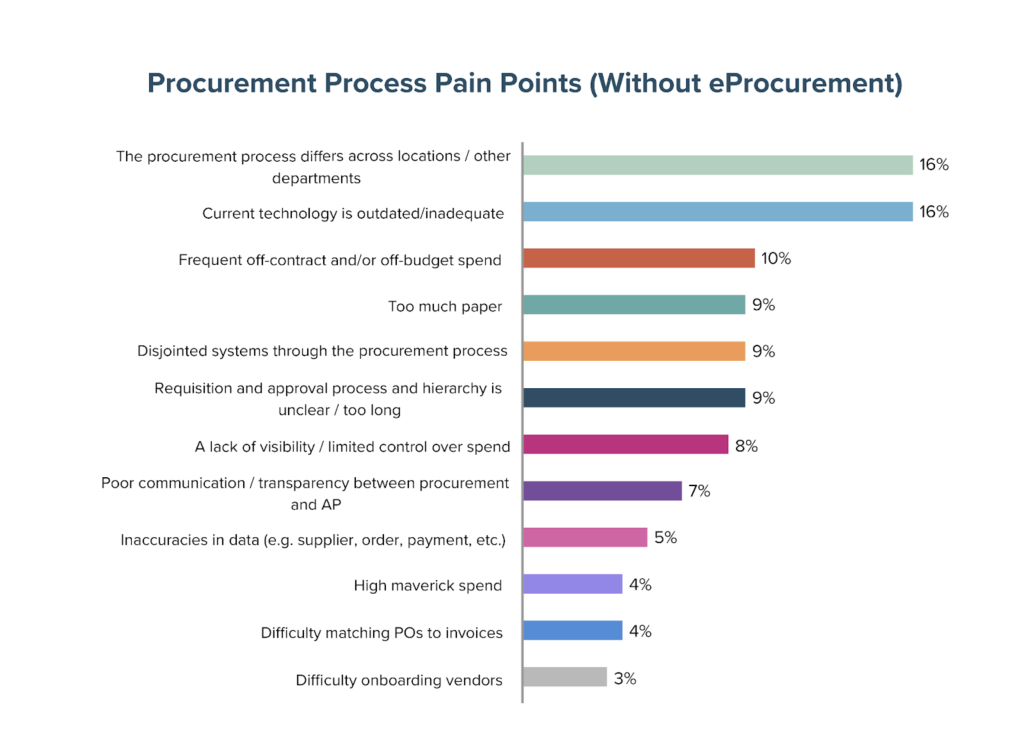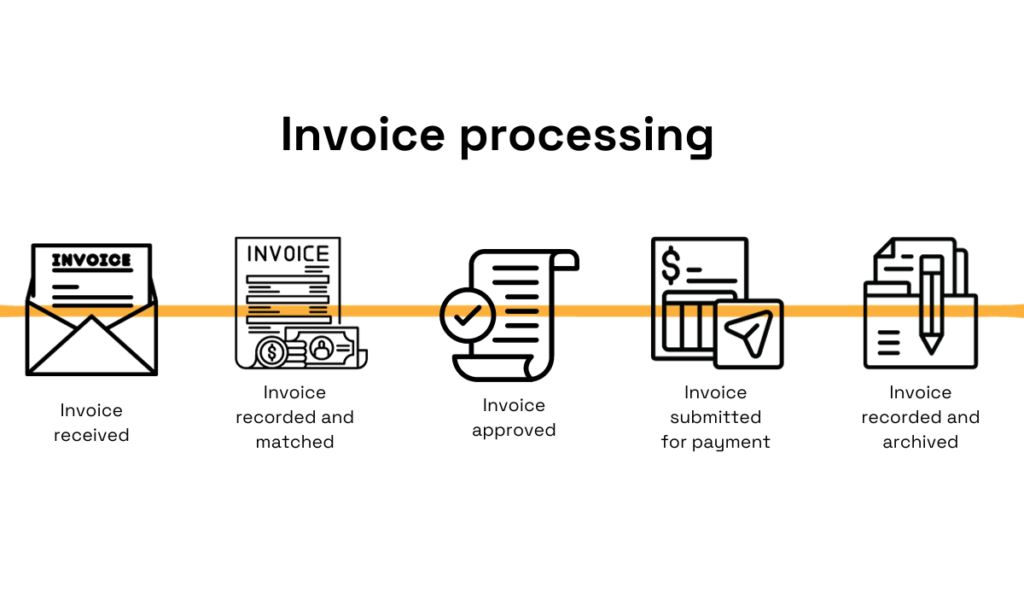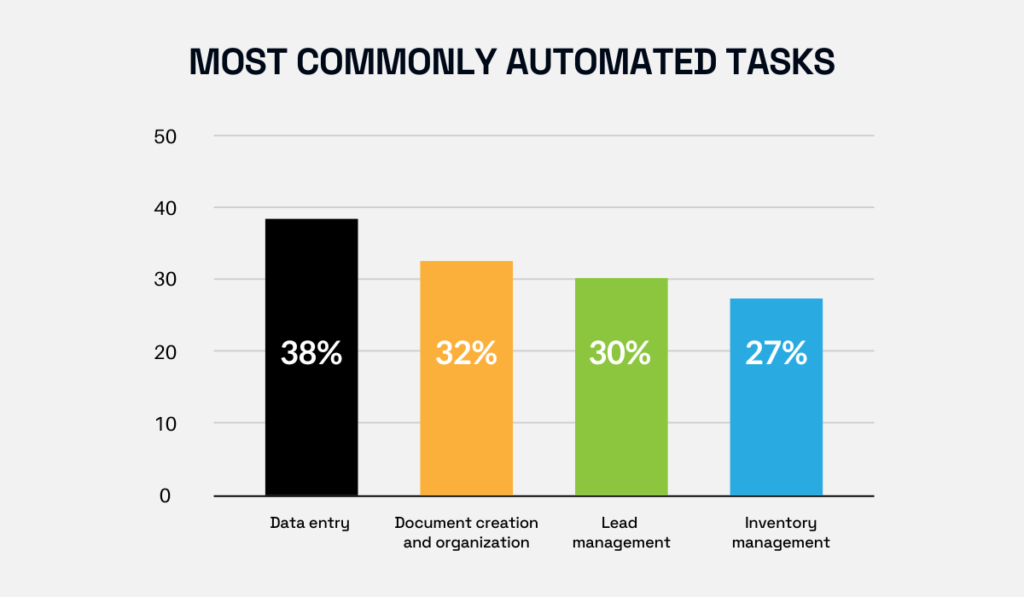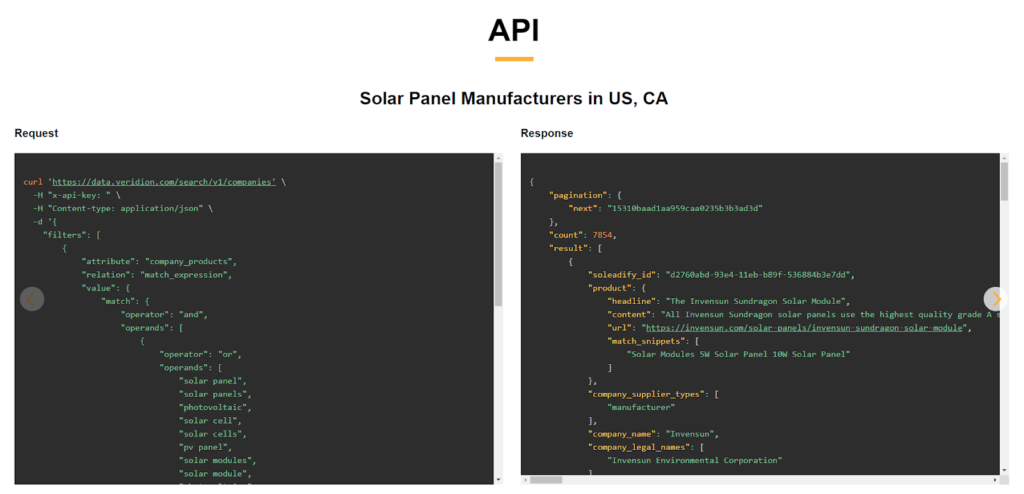Ultimate Guide to Procurement Automation


Staying ahead of the curve with procurement requires more than just savvy strategies and keeping a finger on the market’s pulse.
It calls for technological automation that improves traditional ways of doing business.
In fact, the most productive companies leverage technology to streamline their processes and boost efficiency.
That’s why, in this article, we’ll cover all bases regarding procurement automation, from the why and how to the nitty-gritty of selecting the right solution.
Let’s get started with the basics.
Procurement automation is the use of software to streamline a company’s procurement process.
In other words, instead of spending hours manually sorting quotes, sending purchase orders, tracking deliveries, and reconciling invoices, you’ll use software to automate some aspects of that work.
Automation can streamline the processes of procure to pay, starting from creating purchase requisition to placing an order, invoicing, and payment, and source to contract, which include supplier relationship management and contract management.

Source: Veridion
But why should businesses consider procurement automation? Well, statistics lay it out quite clearly.
A PwC survey conducted in 2022 showed that 82% of companies that are highly digitalized manage to create value (in the form of more control, efficiency, and sustainability) thanks to procurement data they have.
Also, PwC learned that 60% of companies are keen on using software for ESG and CSR.
The financial benefits of procurement automation can be significant.
One comparison suggests that automated procurement solutions could significantly reduce the average cost of processing a purchase order—from $107 for organizations without automation to $32 for organizations that do leverage automation.
Businesses worldwide are recognizing these results.
Data from a recent global survey reveals that approximately 66% of businesses across various industries are piloting solutions to automate at least one of their business processes.
Now, different companies have diverse procurement needs, so your automation might be as simple as an automatic ordering system or as complex as a full suite of procurement software.
The goal, however, remains the same: to simplify, streamline, and speed up the procurement process.
Are you finding it challenging to handle a mountain of procurement tasks, manually sifting through piles of spreadsheets, documents, and emails?
The process can be frustratingly slow, dauntingly time-consuming, prone to errors, and requiring relentless focus.
Procurement automation takes you leaps and bounds ahead in terms of efficiency.
Let’s be honest: the top benefit you’ll enjoy when automating your procurement is undeniably the streamlining of your processes.
Levvel Research surveyed over 400 companies to identify the key pain points in the procurement process.
The findings? All roads lead back to the snail-paced progress of tasks.
Whether it’s because the procurement methods differ across departments and locations or there’s the lack of a centralized system—the common denominator is the slow pace.

Source: Levvel
Procurement automation solves this by speeding up mundane or repetitive tasks.
Things that were usually done manually, such as data entry or collection of data, can now be handled automatically with the software.
Take, for example, a KPMG case study that revealed how using procurement bots to manage the receipt and issue process helped a company save thousands of work hours that would otherwise be dedicated to manual goods receipt and issue processes.
Collaboration lies at the heart of every successful procurement process, whether it’s between the company’s departments or between the business and suppliers.
And good collaboration that’s powered by automation can help you cut costs.
Here’s an example.
An article from McKinsey highlights that companies that worked closely with suppliers regularly demonstrated higher growth, lower operating costs, and greater profitability than their industry peers.

Source: McKinsey
Yet, as the same article emphasizes, many companies struggle to integrate successful collaborations into their overall procurement strategies.
This challenge is often magnified due to the fragmented information across different systems and stakeholders.
That’s where procurement automation comes in, serving as a single source of truth that enables efficient collaboration, both internally and externally.
By having all procurement-related data in one centralized place, stakeholders–whether they’re from different departments or different companies entirely–have timely access to the same accurate information.
This significantly reduces the chances of misunderstandings, delays, and costly mistakes that can stem from dealing with outdated, uncentralized, or inaccurate data.
Companies nowadays are dealing with a significantly greater level of procurement risk than they did just two years ago.
According to Deloitte’s 2023 study, nearly half (43%) of chief procurement officers (CPOs) can vouch for this unsettling reality.
This Deloitte study also shines a light on the key factors that are driving procurement risks.
Rising costs due to inflation, supply shortages, geopolitical turmoil, and internal obstacles like organizational silos or non-standardized processes all play a part.

Source: Deloitte
Here’s how automation can help you tackle them.
In the face of fluctuating prices caused by inflation, automation offers predictive algorithms to help you identify cost variances, optimize supplier selection, and negotiate favorable terms.
Supply shortages are another significant risk that has become increasingly common lately, making it harder for procurement teams to secure essential materials and goods.
Automated systems can track supplier performance, monitor inventory levels in real-time, and issue warnings when potential shortages are on the horizon.
Additionally, many procurement automation tools (like our own) utilize AI and machine learning to search through various sources, including supplier websites, online marketplaces, and social media platforms, to help you discover new suppliers.
With 72% of business decision-makers agreeing that digital processing increases resilience, it’s clear that automation is the best way forward if you want to mitigate many of these procurement risks.
Automation is not about replacing every human-conducted task ever with software.
Instead, it’s about thoughtfully implementing technology to take the load off those tedious, time-consuming, or mistake-prone tasks and freeing up more of your attention for tasks that truly need human expertise.
Therefore, it’s crucial to identify processes that need automation the most.
That’s why, in the following sections, we will dissect the top procurement processes that are the perfect candidates for automation.
Hiccups in the sourcing of materials and goods, missed deliveries, or, worse, non-compliance with industry regulations are not just common supplier management challenges but are also situations that can setback your businesses.
In fact, a Deloitte study found that:
“Ony 50% of procurement leaders surveyed had high or very high visibility into their tier-1 suppliers, while only 90% of companies described their visibility into extended supply networks as ranging from moderate to extremely low.”
Those are alarmingly high numbers.

Source: Deloitte
When you use software to automate supplier sourcing as part of your procurement process, your supplier data is all digitally stored and managed.
And then, you have a much better visibility into all your supplier tiers.
Additionally, automation takes the burden off sourcing potential suppliers by enabling you to access data about them based on their main business activities, manufacturing capabilities, location, revenue levels, products, ESG, and other data attributes.
For instance, the image below shows how easy it is to, let’s say, source suppliers for blood pressure monitors that operate in the USA and Canada and have revenue exceeding 100 million dollars simply by specifying search parameters.

Source: Veridion
As showcased in the image, the software located 48 suppliers in just 2.5 seconds.
You have to admit that it would take a person much more time than that to find those same 48 suppliers—far more than 2.5 seconds, for sure.
Therefore, automation in supplier management is the key to achieving effectiveness in the sourcing strategy.
It not only saves you time but also provides access to a much larger pool of right-fit suppliers.
Picture this: You’re sitting at your desk, buried under a mountain of contracts, trying to keep up with your organization’s growing list of suppliers. Sound familiar?
If so, you’re not alone. Research shows that organizations lose a staggering 9.2% of revenue due to poor contract management.
Additionally, according to Forrester and Aberdeen, on average, it takes 3.4 weeks to get a contract approved.
These situations can have a hefty price tag, thanks to associated penalties, forgotten renewals, and other revenue-impacting governance.
This is why automation is so pivotal in contract management. It helps you stay on top of your supplier contracts, ensuring you adhere to the agreed terms and conditions while reducing exposure to unnecessary risks.
Therefore, it’s not surprising that Gartner has predicted that by 2024, our manual workload for contract reviews will decrease by 50% thanks to AI-based contract analytics solutions.

Illustration: Veridion / Data: Gartner
With an automated system, you can have all your contractual data in one central location, which makes it easily searchable and accessible.
Automation can also help you identify potential setbacks before they become real problems.
For instance, think of a contract that’s nearing its expiration date or an unsigned supplier agreement that’s been overlooked.
Automated contract management tools can alert you in these situations, helping you take precautionary action.
Do you ever feel like your organization’s purchase requisition process slows down your procurement workflow more than necessary?
The purchase requisition, a critical internal mechanism to get approval for a purchase, often requires going through multiple stages of approval. Doing this manually can take a significant amount of time.
Procurement, for instance, must source the right vendor. Legal needs to verify the contract. Finance needs to sign off on the expense. And the list goes on.

Source: Veridion
Automation accelerates the multiple approval stages that are typically involved in purchase requisitions.
An automated system sends notifications as the request progresses, making it easy for approvers to take action quickly and minimize delays.
Additionally, purchase requisitions require a lot of paperwork and manual processes, and these are, by definition, routine, repetitive tasks that are tedious and error-prone, which can translate into setbacks and increased costs.
Automation performs these tasks quickly and accurately, streamlining the entire process.
A purchase order is a critical document in the procurement process.
It keeps both parties accountable, ensuring transparency and keeping your company’s spending in check.
However, if you’ve ever dealt with purchase orders manually, you know how time-consuming and unreliable they can be.
Between managing paperwork, getting approvals, and sorting through stacks of documents (as vividly illustrated below), there’s ample room for mistakes.

Source: Veridion
Thankfully, by implementing procurement automation, you can significantly lower the risk of mistakes and avoid delays and miscommunication.
That’s because automation enables you to create purchase orders digitally.
A digital purchase order functions in the same way as a paper one, carrying all the vital information needed to seal the deal, except that it’s in digital format.
The best part is that a digital purchase order gathers all the transaction-related documents and keeps them in one central location.
In simple terms, invoice processing is all about managing the invoices that your company receives from suppliers or vendors.
It involves receiving the invoice, checking it for accuracy, verifying it against the purchase orders or contracts, getting approvals, and finally making the payment.
It might sound straightforward, but if you’ve ever been in charge of this process (or if you just glance at the image below), you know it’s anything but simple.

Source: Veridion
Why so? You’re dealing with a flood of paperwork, and you’re at risk of human error.
Accidents happen, and even the most meticulous person occasionally makes a mistake.
Whether it’s keying in the wrong figures, losing an invoice, or missing approval–these errors can be costly and time-consuming to rectify.
Not to mention, there’s also the risk of late payments because of misplaced information or overlooked approvals, which can result in strained relationships with suppliers.
Procurement automation essentially digitizes the whole process, enabling you to manage your invoices electronically and store all your information in one easy-to-access place.
But don’t just take our word for it. The facts speak for themselves. For small to medium-sized businesses, automation resulted in:
Also, according to a study by Ardent Partners, if your business hops on the automation bandwagon and implements e-invoicing systems, you can expect a 31% boost in invoice processing speed compared to businesses that haven’t embraced automation yet.
And that is something to consider.
Even though AI is taking the world by storm, it’s a surprising reality that many businesses are still wrestling with outdated manual procurement processes.
Are you nodding in agreement and thinking, “That definitely sounds like my situation”—keep reading.
In the following sections, we will see how you can make the digital transition more seamless.
We’ll analyze different solutions, provide you with guidelines on how to discern the software that is tailored to your needs and highlight the best workflow practices.
Implementing automation without identifying which areas can truly benefit from it is like going on a road trip without a GPS.
You might reach the destination, but you’ll likely take unnecessary detours and lose valuable time along the way.
A key fact to remember is this–not all processes should be automated.
This is supported by research from Valoir, which highlights that only around 40% of an average workday holds potential for automation, meaning that there are still areas that automation can’t handle.
The trick is to identify tasks that are repetitive, monotonous, slow, and can easily open the door to mistakes. These areas are perfectly suited for automation in your procurement process.
According to Zapier, tasks that are the most commonly automated include data entry, file management, customer relationship management, and inventory management.

Illustration: Veridion / Data: Zapier
On the other hand, some tasks in the procurement process still require a human touch.
Strategic decision-making, critical thinking, and personal interactions are best left to the human expertise of your team.
Remember, avoid automation for automation’s sake.
Strategic implementation after careful identification of processes is the key to unlocking the undeniable potential of procurement automation.
Let’s face it: deciding on the right automation tools for your business goes beyond merely ticking boxes on a feature list.
The key lies in evaluating your current state of procurement and taking an honest look at your existing workflows and challenges.
Interestingly, though, while choosing these tools, let’s not overlook the rapidly changing tech landscape punctuated by Artificial Intelligence.
It would be wise to direct your focus towards AI-driven tools specially tailored for procurement practices, given AI’s trailblazing influence on today’s technology.
Let’s walk you through the process of choosing the best software tool with the help of an example: Veridion, our own proprietary tool.
If you’re looking for a tool that can offer you a comprehensive supplier database, Veridion could be your top choice.
Boasting data on more than 80 million businesses from no fewer than 230 countries—updated regularly—Veridion is an excellent solution to consider for supplier sourcing enablement.
By integrating AI and machine learning capabilities, Veridion enables businesses to find their ideal suppliers much faster using API.

Source: Veridion
This way, they can mitigate supplier risk factors such as financial instability, regulatory non-compliance, or reputational issues.
It’s crystal clear: obtaining this vast amount of supplier data manually would be nothing short of impossible.
Keep in mind, however, that the tool you choose should align with your business’s distinct procurement requirements.
If they call for specific functionality, another solution may be more appropriate to fulfill your needs.
Once your automation tool has been selected, the imminent task is to craft a well-structured procurement automation workflow.
The process might seem straightforward, yet there is a notable contrast in opinion and practice.
A significant two-thirds of business leaders agree that a deep analysis of their procurement processes before embarking on digital transformation creates a clearer roadmap.
However, it’s surprising to see that 82% of them overlook this crucial step entirely.

Illustration: Veridion / Data: Raconteur
Therefore, if you want to automate your procurement processes successfully, this step isn’t to be skipped.
Start by creating diagrams for each stage of the process you want to automate, some of which were already touched upon earlier.
For example, below, you can see an example of how the diagram for the purchase order process might look like.

Source: Lucidchart
It’s important to chart other stages as well, such as purchase requisition, supplier research and selection, invoicing and payments, delivery and auditing, contract management, and so on.
Once the workflows have been created, it’s essential to validate them.
Test your workflows to identify minor errors, fix bottlenecks, and implement necessary adjustments before they get cleared for automation.
And there you have it—the comprehensive guide to procurement automation, broken down and laid out for you to easily grasp its potential.
The benefits of procurement automation are numerous, undeniable, and impactful—from accelerating operations to making significant cost savings.
It’s also clear that automation is the future of procurement.
As the common saying goes, the early bird gets the worm. Embracing automation sooner rather than later will yield tangible benefits to your business in no time.